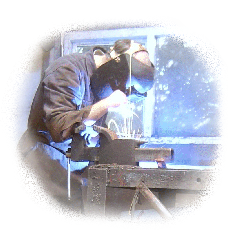barumite.co.uk

Making up a hydraulic pipe |
|
Hydraulic pipes in service, particularly in agricultural machines, can get damaged and therefore need replacing. Damage can be caused by excess stress from pulling the pipe or knocking the fittings, and from rubbing away the outer rubber coating, exposing the inner wires resulting in fraying or corrosion. Types of hydraulic pipe
There are two general types of hydraulic pipe. Those that have crimped ends and those that have re-usable screw-on ends. Each type uses a slightly different size hose so it is important to check hose and fittings match. Re-usable fittings will not grip crimp type hose properly and are likely to fly off when system is pressurised. When made up, either type can be used interchangeably. The simplest way to make up a replacement hydraulic pipe is the use re-usable fittings as this does not require specialist equipment. Making a hydraulic pipe using re-usable ends
The first step is to cut the hose to the required length. The cut should be straight and clean, with no fraying of either rubber or wire. This can be done with a hacksaw but is much better done using large cable cutters. Hold the hose in a bench vise and screw the ferrule on by hand, then tighten with a spanner or socket until the hose almost reaches the end of the thread inside. Grip the ferrule in the vise and push the pipe end fitting into the ferule, being sure not to tear the inner rubber edges. Tighten until about 5mm from the end to allow adjustment later. Before fitting, check there is a clear passage through the pipe by blowing through it.
For potato harvester, swede harvester or related crop-handling machinery see the Bray Valley Machinery page |

